The best tank of the Israeli army
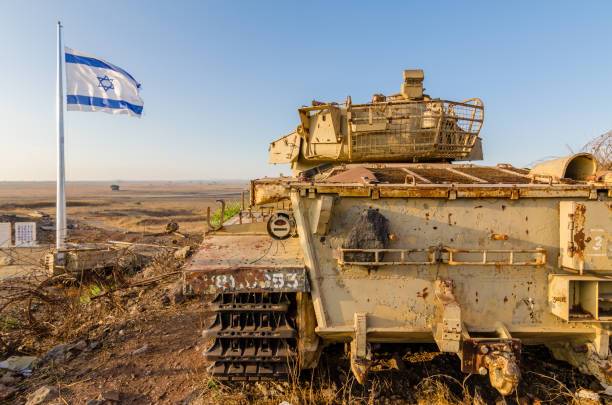
Every war gives birth to its own symbols.
The winning side was placed on a pedestal weapon and equipment that made a significant contribution to the victory. Cult objects were rarely perfect. Their main merit was that they appeared at the right time. And their technical appearance corresponded as closely as possible to the concept of the army in which this equipment was used.
For us, the T-34 is such an iron symbol.
In other countries, preference is given to ships and aviation.
In Israel, where wars for the most part were also fought on land, they treat with great respect tank Centurion.
The Centurion medium/heavy tank was developed in England back in 1944. Some Western historians consider it the main battle tank of the early generation. An overly controversial statement. But the triad of combat qualities (thoughtful protection, high mobility and firepower) pointed to its special purpose.
Tanks of this type have been used in many conflicts and have served under different flags around the world. Europe, Africa, Middle East.
The finest hour for the Israeli Centurions was the Yom Kippur War (1973).
Mysticism or coincidence? The mention of “Doomsday” only strengthened the menacing motive. Exactly half a century ago, one of the most brutal Arab-Israeli wars broke out, literally putting Israel on the brink of survival.
A coalition of Arab states planned to take revenge for the defeat in the Six-Day War. Everyone was determined. The enemy was taken by surprise.
The all-seeing Mossad and AMAN (military intelligence) did not notice the accumulation of troops along the borders. The fearless Khel Haavir (air force) found themselves paralyzed by new air defense systems.
The last hope for Israel was its armored fists, which consisted of a third of Centurion-type tanks.
And among those Israeli tanks that were considered the most modern, the share of Centurions increased to 50%.
The Legend of a Thousand Tanks
The situation in the Golan Heights took a desperate turn in the first hours of the war. Here a group of five Syrian divisions struck (2 tank and 3 mechanized - four-brigade, also including armored vehicles).
The distance from the Syrian-Israeli border to Tel Aviv was about 100 kilometers. If the remnants of the Israeli units were dropped from the Golan Heights, this would open the way to the valley. With the establishment of crossings across the Jordan, there was a threat of an operational breakthrough by tank “wedges” - straight to the Israeli capital. Checkmate!
Subsequently, the battle in the Golan was thoroughly studied by military experts. There are discrepancies in the number of losses of the parties. Nevertheless, the general course of the conflict and its results are beyond doubt. The Israelis managed to stop the advance.
Then legends in the spirit of “300 Spartans” were born. And each subsequent version contained more and more exaggerations. A unique victory was won in conditions of overwhelming numerical superiority of the enemy. And only people with superhuman skills could cope in such a situation.
The mind of a grandmaster and a lightning-fast reaction to a threat: shot, shot - and the Israeli tank single-handedly crushed the battalions!
The high professionalism of the IDF has become an axiom. And even the most ardent skeptics admitted deep down that the Arabs were opposed by not the most ordinary and unexpectedly strong army.
Everything changed in 2023 with the advent of “objective control means.” A clear demonstration of the skills of Israeli tank crews, filmed using ubiquitous drones, has raised questions even among Israel's most devoted supporters.
This is not what was expected from “professionals”.
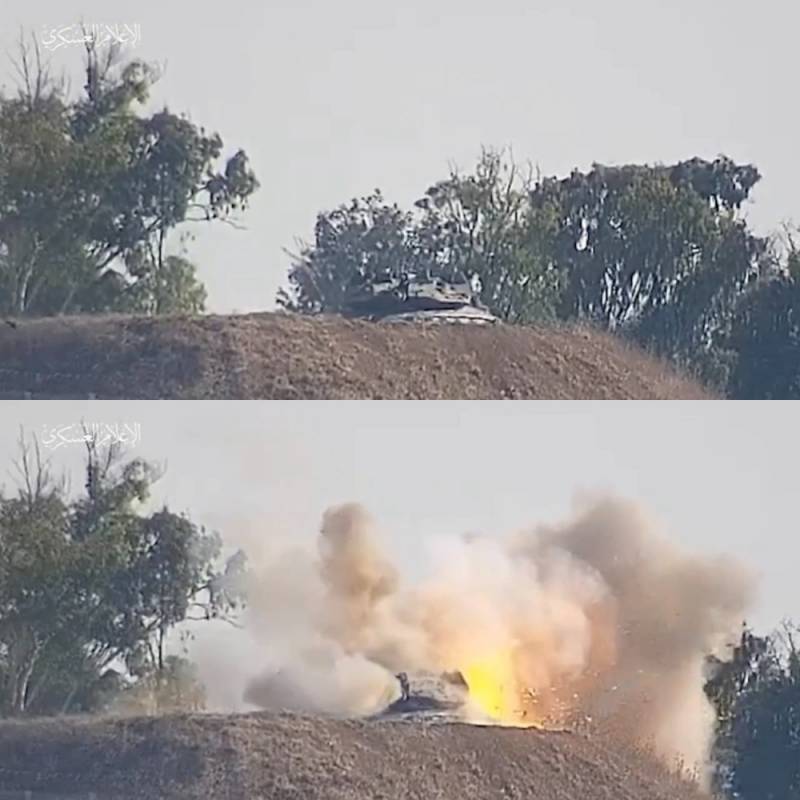
This Merkava stood carelessly in the open for an hour. The enemy managed to examine the stationary tank from all sides, rejoiced at his luck, and a smoky trail of ATGMs stretched towards the Merkava. Whether he broke through or not is a separate question. But if a tank allows itself to be shot with impunity, then no means of defense will help it.
Returning to the events of 1973, the “miracle in the Golan” had a completely rational explanation. The Israelis faced the most inept enemy of any army on the Eurasian continent. Neglect of preparation and weak motivation are at the level of empty slogans behind which there was no desire to fight and win.
And there was something else. The Israelis did not fight off tank attacks with their bare hands.
Seven hundred Centurions rolled out onto the dusty plateau...
Critics will argue that the Centurions did not all arrive at once. In turn, Syrian armored vehicles also advanced in two echelons and were introduced into battle gradually.
The Syrian T-54/55 was opposed by the most advanced modification of the English Centurion tank, known under the designation Shot Kal.
The Israeli side had some technical superiority, which veterans of the battle in the Golan prefer to keep silent about.
"Whip" with Continental diesel engine
In the dry and hot desert, covered with a scattering of stone blocks, the Centurion became the king of the off-road. The reason for this was two factors.
The first is the presence of a hydromechanical double-flow transmission and rotation mechanism. In the understanding of the average person, this meant the presence of an automatic transmission, which greatly simplified maneuvers and control of the tank in difficult conditions.
The second factor was the archaic, but not without its merits, Hortsmann suspension. The resulting loads when hitting an obstacle are smoothly distributed between a pair of rollers connected by a common spring. Exactly the quality required on the rocky slopes of the Golan.
All suspension elements were fixed externally, which also simplified its maintenance and repair in the field.
Having climbed a steep slope, the Centurion could observe and shoot opponents as if in a shooting range. Using an interesting feature inherent in its design - the gun barrel could be lowered down by 10°.
In battle, the Shot Kal did not spare shells - its ammunition load consisted of 70 rounds of 105 mm caliber (for comparison: the T-54/55 ammunition included only 34 shells).
The floor of the fighting compartment rotating together with the turret allowed the loader of the Israeli tank not to run in a circle, but to concentrate on his work. At the same time, he stood to the left of the cannon and fed shells with his right hand.
The T-54/55 loader's place, on the contrary, was on the right side of the turret, and the entire load fell on his left hand (whereas most people are right-handed).
Israeli tank crews immediately drew attention to such moments, noting them in their memoirs.
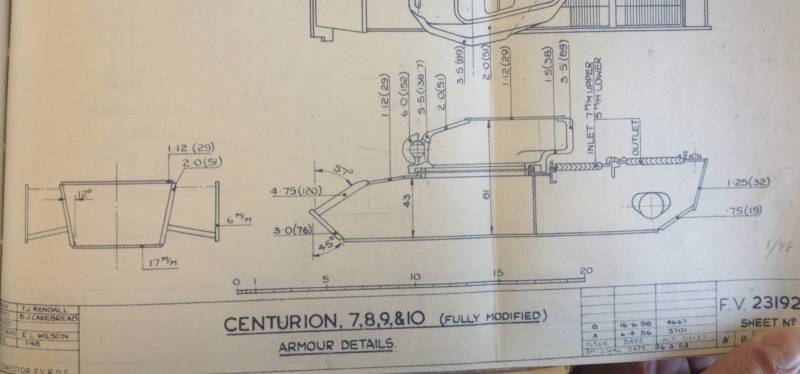
The Centurions' hits created a deafening effect. In a tank battle in the Golan, armor-piercing land mines were actively used for the last time (!).
This type of ammunition was developed in Great Britain back in the late 1940s and initially made a strong impression. Displacing all other types of armor-piercing shells. One of the advantages was shooting at distances exceeding the range of a direct shot. Where ordinary “armor-piercing guns” lost speed and lost their penetrating qualities.
The landmine was also difficult. At first, a “blot” of 5–6 kilograms of plastic explosive appeared on the armor. Another moment later, the detonation of the explosive created a specific pressure of tens of tons per square centimeter of armor. In an era when tanks were not yet equipped with combined protection, this led to the destruction of the rear side of the armor and damage to the crew and internal equipment of the tank by fragments.
Such shaking and broken pieces of metal posed a particular threat to the T-54/55, where there could be ammunition inside just behind the armor.
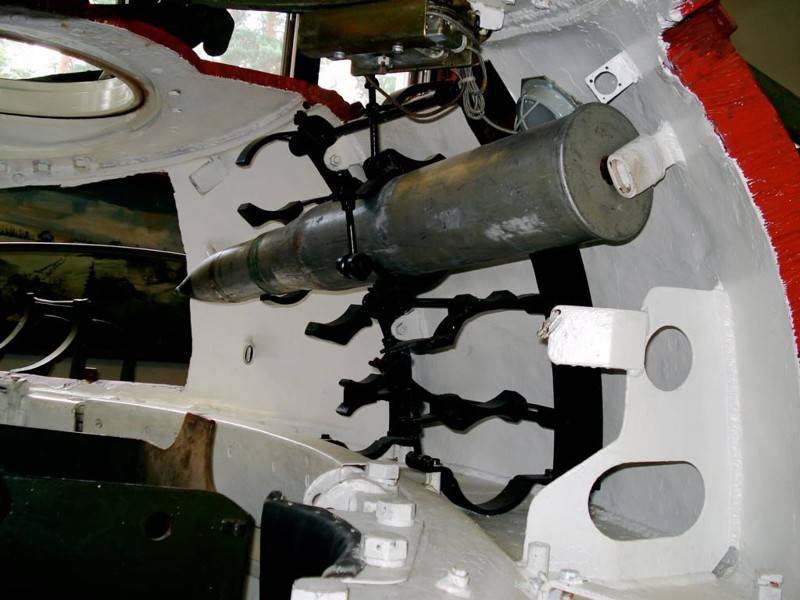
It is worth noting that as of 1973, the potential of tank guns significantly exceeded any protection created using traditional homogeneous armor.
The figures have long been declassified and have become the property of historians. The illustration shows the characteristics of the 3BM8 armor-piercing sub-caliber projectile of 100 mm caliber. Such shells have been included in the ammunition load of T-54/55 tanks since the mid-1960s.
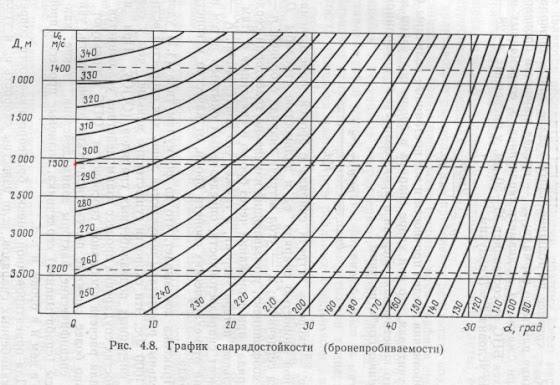
"Centurion" made its way head-on from a distance of a kilometer.
A similar threat to the T-54/55 was posed by British L28 or L36 sub-caliber shells, capable of penetrating 120 mm of armor at an angle of 60° at a distance of 1 yards (000 m).
The fragile “parity” was violated by the more modern T-62 tanks, which were available to the Syrian Guard. The Molot smoothbore cannon penetrated the Centurion in any place and from any distance at which tank duels were supposed to be fought. This humiliating fact was repeatedly noted by the Israeli tank crews themselves.
When armor ceased to be a guarantee of protection. When every hit meant a breakthrough. At such moments, everything began to depend on more subtle patterns...
Nine lives of "Centurion"
The losses of personnel were paradoxically high, given the number of destroyed tanks.
According to official IDF data, the bulk of losses were accounted for by tank forces (about 40%). According to the most conservative estimates, over 4 tank crews were injured, including 000 irretrievable losses. Excluding rear services - their losses were recorded separately.
Of course, Arabic sources give many times more meaning.
Now let's turn to the hardware.
Israel estimated its losses at 400 completely destroyed tanks. But that's only half stories.
Equipment losses always depend on the situation: which army is left with the battlefield, and which army can evacuate damaged tanks from it. In total, according to the IDF, at the end of hostilities, the Israelis managed to evacuate and return to service about 400 more tanks - from among those that were previously part of the Israeli army. Trophies were recorded separately.
400 shot down and abandoned "Shot", "Mag" and "Super Sherman". Among which were both tanks with minor damage and completely destroyed vehicles. They tried to hide the fact of their destruction from the public.
All this is in addition to the 400 completely destroyed (officially).
400 + 400 = 800. This value is much closer to the truth.
We are unlikely to know the exact numbers. But it is worth noting that real losses could not differ significantly from the official values. For a simple reason. By the beginning of the war, Israel had 2 tanks, even taking into account the Shermans and captured T-000s. If all the tanks (or almost all) had been lost, the results of that war would have been different.
Moreover, even the figure of 1 destroyed tanks does not explain the number of casualties among personnel.
The Israelis explain this paradox by the fact that the Centurions’ crew “changed” several times during the battle...
The Centurion's amazing survivability was the result of many factors.
First of all, due to the weak (insufficient) armor-piercing impact of armor-piercing sub-caliber projectiles.
The 3BM8 shell contained exactly 0 grams of explosive. For comparison, its predecessor, the slow-witted “armor-piercing” with a ballistic tip 53-BR-412, contained 65 grams of explosives. It makes no sense to make comparisons in terms of armor penetration, but the difference in armor penetration is obvious.
Apparently, a hole of a dozen centimeters was not a reason for the 50-ton colossus to fall apart. The crew is beyond envy. Otherwise, the tank underwent ersatz repairs and returned to service.
Another point was related to the layout of the “Shot Kal”. Its ammunition was placed differently than in Soviet tanks.
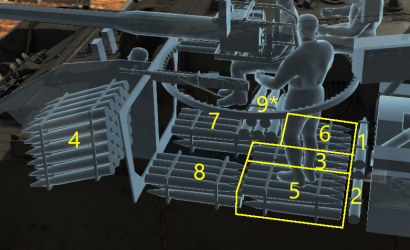
The Centurion's ammunition was located in the front of the hull, as well as on the floor of the fighting compartment. By the middle of the battle, only shells remained in the lower stack. Which significantly reduced the likelihood of ammunition damage. After all, the bulk of hits fell on the turret and the upper part of the hull.
The presence of shells on the floor of the fighting compartment did not bode well when hitting a mine. However, the creators of Centurion took care of this too.
One of the first in the world, the Centurion received a v-shaped hull with inclined sides, which increased its resistance to explosions under the bottom.
For the Syrian infantry, the Centurion also proved to be a difficult target.
The main anti-tank weapons of the infantry were rocket-propelled grenade launchers. In turn, the Centurion tanks were distinguished by the presence of large-area anti-cumulative screens that completely hid their sides. And these are not simple decorations. Steel plates 6 mm thick - fixed at a distance of half a meter from the body.
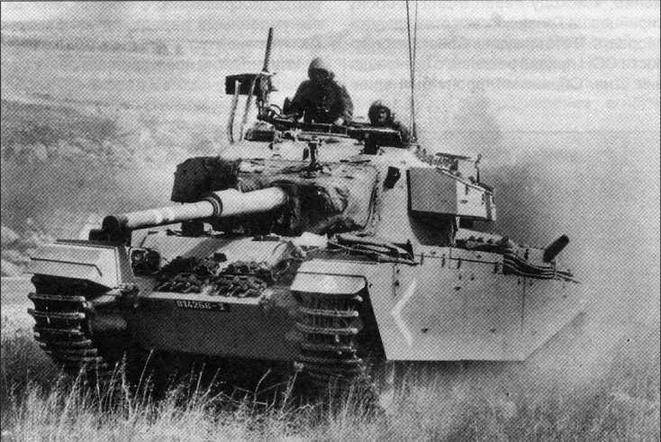
Firing an RPG at the front of a tank was made more difficult by the fact that it was the front of a tank. Where the views of the crew members were most often directed, along with the cannon and machine gun.
A very shameful drawback of the Centurion was the lack of night vision devices. A difficult situation to imagine by the standards of the 1970s. For a tank that was considered the backbone of armored forces.
At that time, night vision devices, active and passive, for the gunner and driver, were already widely used on tanks around the world. Israel, militarized to the limit, turned out to be an outsider here.
The discussion about night vision devices will be brief. The Syrians were unable to use their trump card, because the presence of standard night vision devices on the T-54/55 and T-62 did not affect the outcome of the hostilities.
Not enough attention has been paid to planning operations in the dark. Or the generals knew for sure that the personnel of the tank brigades were not ready to use night vision devices and conduct combat operations at night.
The Israelis, on the other hand, were aware of this threat. And they made the only possible decision. Retreat? The commander of the 7th Tank Brigade, Janusz Ben-Gal, ordered everyone to freeze in place and shoot at moving silhouettes in the night.
By morning the 7th Tank Brigade ceased to exist. Of the 105 Centurions, 98 were shot down. The front line did not budge.
Heirs of the Tigers and Panthers
When talking about the events of 1973, Israelis strike a sad note. After all, they had to fight on outdated tanks from World War II against the “modern” T-54/55 and ultra-modern T-62.
The Centurion tank was actually conceived and designed at the end of World War II, inspired by the German “menagerie”. He even received the unofficial nickname "British Panther". But this is only the beginning of the story.
The tank had impressive potential for upgrades. And this circumstance made it possible to create quite modern technology on its basis for the early 1970s.
The Israelis purchased only the 5th and 7th series Centurions. Which were similar to the first Centurion in the same way that the modern Abrams M1A2 SEPv3 is similar to the Abrams of the 1980 model.
No mention of 76 mm or 83 mm guns - all Israeli Centurions were routinely armed with the 105 mm Royal Ordnance L7 cannon. A well-known weapon that was equipped with all Western tanks of the 1960s and 1970s. From the American M60 to the German Leopard and the Swedish Strv.103.
A gun of this type was even installed on the first Abrams.
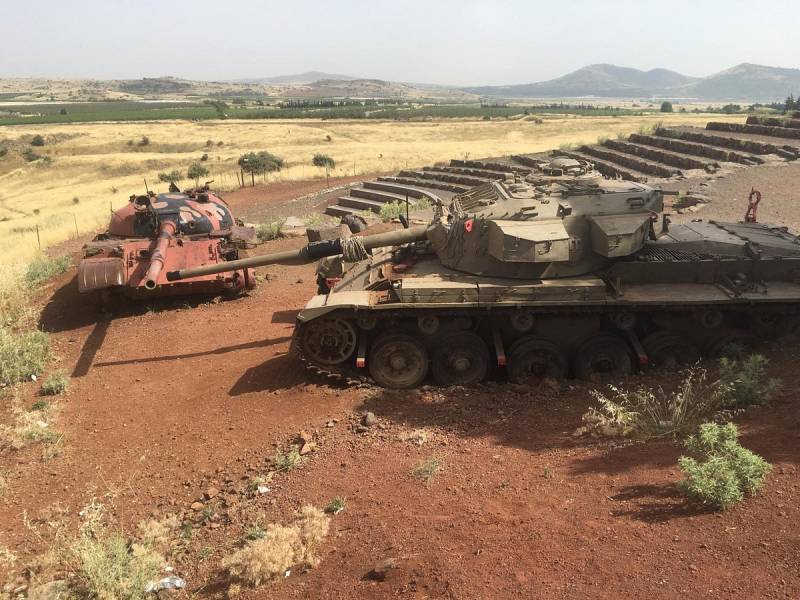
In the early 1970s, Israel carried out extensive modernization of the Centurions. Each component of the tank has undergone dramatic changes. Observation devices, a radio station, replacement of a machine gun, ammunition rack and fuel supply... The most important thing was the transition to an American diesel engine produced by Continental Motors, which added power, reduced the likelihood of fire and, most importantly, it was paired with an automatic transmission. In terms of power density (15 hp/t), the modernized tank weighing 50 tons is equal to the 36-ton T-54/55.
With the presence of competent and timeless solutions regarding the ergonomics of the fighting compartment, the Centurion-Shot or Shot Kal turned into a qualitatively new tank.
Harsh equipment for local massacres
Apparently, the legends about the “Centurions” surviving a hit from the D-10T cannon have a basis in reality.
Centurion Shot tanks took an active part in all subsequent wars, including large-scale operations in Lebanon in 1982. Many have survived to this day - as a chassis for heavy armored personnel carriers "Nagmashot", "Nagmahon", "Nakpadon".
It is worth noting that after 1973 there were no more purchases of British tanks. The creation of its own Merkava has begun in Israel.
The list of advantages of the Centurion-Shot tanks may seem illusory against the background of the real advantages of the T-54/55 family of tanks.
14 tons less weight – equal level of protection for the fighting compartment. Modern torsion bar suspension. Night-vision devices.

Even in the West they do not risk denying the obvious. Any discussion about the confrontation between the T-54/55 and the Centurions contains mandatory notification. The effectiveness and results depended on the tactics of using these tanks, as well as on the skills of their crews.
Having read the title “The Best Tanks of Israel,” many probably expected to come across a story about the Merkava. Alas.
Modern Merkava-4, for all its advantages, have never been in situations comparable in scale and significance to the tank battles of 1973.
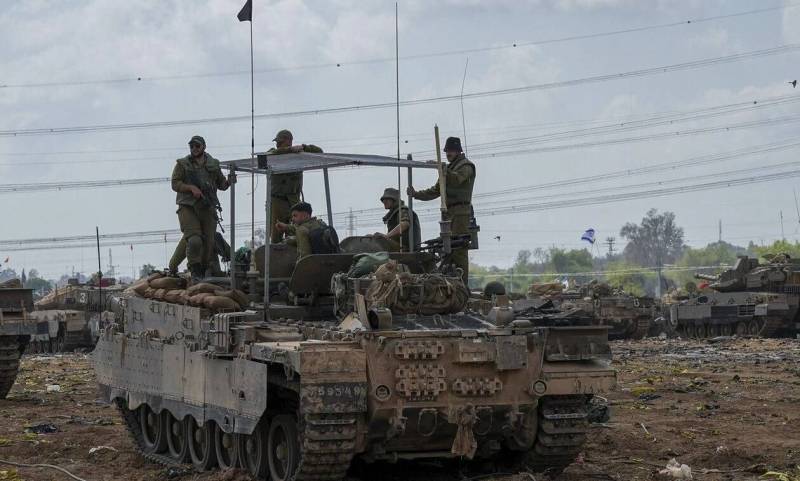
Finally, a shot of a heavy armored personnel carrier “Puma” with a much-needed “visor” in our time (Gaza border, 2023). The familiar side screen and three pairs of articulated rollers, behind which one can guess... the Centurion tank.
The armored personnel carrier does not have a stern ramp; landings are carried out through hatches on the roof of the hull. On the other hand, the Puma does not perform the tasks of “ordinary” armored personnel carriers. Such vehicles are designed to transport equipment and personnel of engineering units.
Information